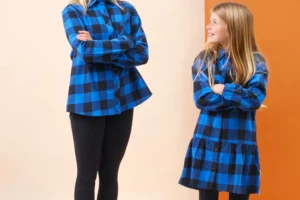In a world where personal style reigns supreme, there’s nothing quite like the satisfaction of wearing a garment you’ve crafted with your own hands. Sewing your own dress shirt not only allows you to express your unique style but also provides a sense of accomplishment and empowerment. In this comprehensive guide, we’ll walk you through the process of sewing a dress shirt from start to finish, ensuring a perfect fit and a garment you’ll be proud to wear.
Materials Needed
Sewing a dress shirt requires several essential materials to ensure both the quality and durability of the finished garment. Here’s a detailed breakdown of what you’ll need:
Fabric
The foundation of any dress shirt, choosing the right fabric is crucial for both comfort and style. Opt for high-quality cotton, linen, or a blend of the two for a breathable and comfortable shirt. Consider the weight and drape of the fabric, as well as the desired look and feel of the finished garment.
Thread
Selecting the appropriate thread is essential for strong and secure seams. Choose a thread that matches the color of your fabric for a seamless finish. Polyester or cotton thread is suitable for most dress shirt fabrics, providing strength and durability.
Needles
Different fabrics require different types of needles for optimal sewing results. For lightweight fabrics like cotton shirting, use fine needles with a sharp point to prevent snagging or puckering. Heavier fabrics may require thicker needles for smooth stitching. Ensure you have a variety of needle sizes on hand to accommodate different fabric weights.
Buttons and Buttonholes
Dress shirts typically feature a row of buttons down the front placket and on the cuffs. Choose buttons that complement the fabric and style of your shirt, whether classic white or contrasting black for a modern twist. Additionally, you’ll need a buttonhole foot attachment for your sewing machine or hand-sewing skills to create neat and secure buttonholes.
Interfacing
To add structure and stability to collar and cuff areas, interfacing is essential. Fusible interfacing, which adheres to the fabric with heat from an iron, is commonly used for dress shirts. Choose interfacing that matches the weight of your fabric and provides the desired level of stiffness.
Sewing Machine vs. Hand Sewing Tools
While a sewing machine offers efficiency and precision, some sewers prefer the control and craftsmanship of hand sewing. Decide which method best suits your skills and preferences. If using a sewing machine, ensure it is in good working condition with appropriate needles and presser feet for the fabric you’re using. For han
d sewing, stock up on essential tools such
as needles, pins, thimbles, and a quality pair of fabric scissors.
Preparing the Pattern
The key to a well-fitted dress shirt lies in the accuracy of the pattern. Begin by taking precise measurements of your body, paying close attention to chest, waist, and arm length. Next, select a dress shirt pattern that suits your style preferences and adjust it according to your measurements for a perfect fit.
Cutting the Fabric
With your pattern adjusted, it’s time to transfer it onto your chosen fabric. Lay out the pattern pieces carefully, ensuring they align with the grain of the fabric. Use fabric shears to cut out each piece with precision, making sure to mark seam allowances and notches for easy assembly later on.
Constructing the Shirt
Now comes the exciting part: bringing your
. Begin by sewing the front panels together, followed by joining the back panels and attaching the sleeves. Construct the collar and cuffs, paying attention to detail to achieve a professional finish.
Finishing Touches
With the main construction complete, it’s time to add the finishing touches that elevate your dress shirt to the next level. Hem the bottom edge of the shirt for a clean finish, sew buttonholes, and attach buttons with care. Finally, press the entire garment to remove any wrinkles and give it a polished look.
Customization and Personalization
One of the joys of sewing your own dress shirt is the ability to customize it to suit your preferences. Experiment with different pocket styles, incorporate contrast fabrics for a unique touch, and explore various collar designs to make your shirt truly one-of-a-kind.

Tips for Success
As with any sewing project, patience and attention to detail are key. Take your time with each step of the process, and don’t hesitate to unpick and redo if necessary. Remember, practice makes perfect, so embrace the learning experience and enjoy the journey of creating your own dress shirt masterpiece.
By following this step-by-step guide, you’ve embarked on a journey of self-expression and creativity. Whether you’re sewing a dress shirt for a special occasion or simply to add to your everyday wardrobe, the sense of accomplishment that comes from wearing a garment you’ve made yourself is unmatched. So, gather your materials, unleash your creativity, and let your style shine through in every stitch.



